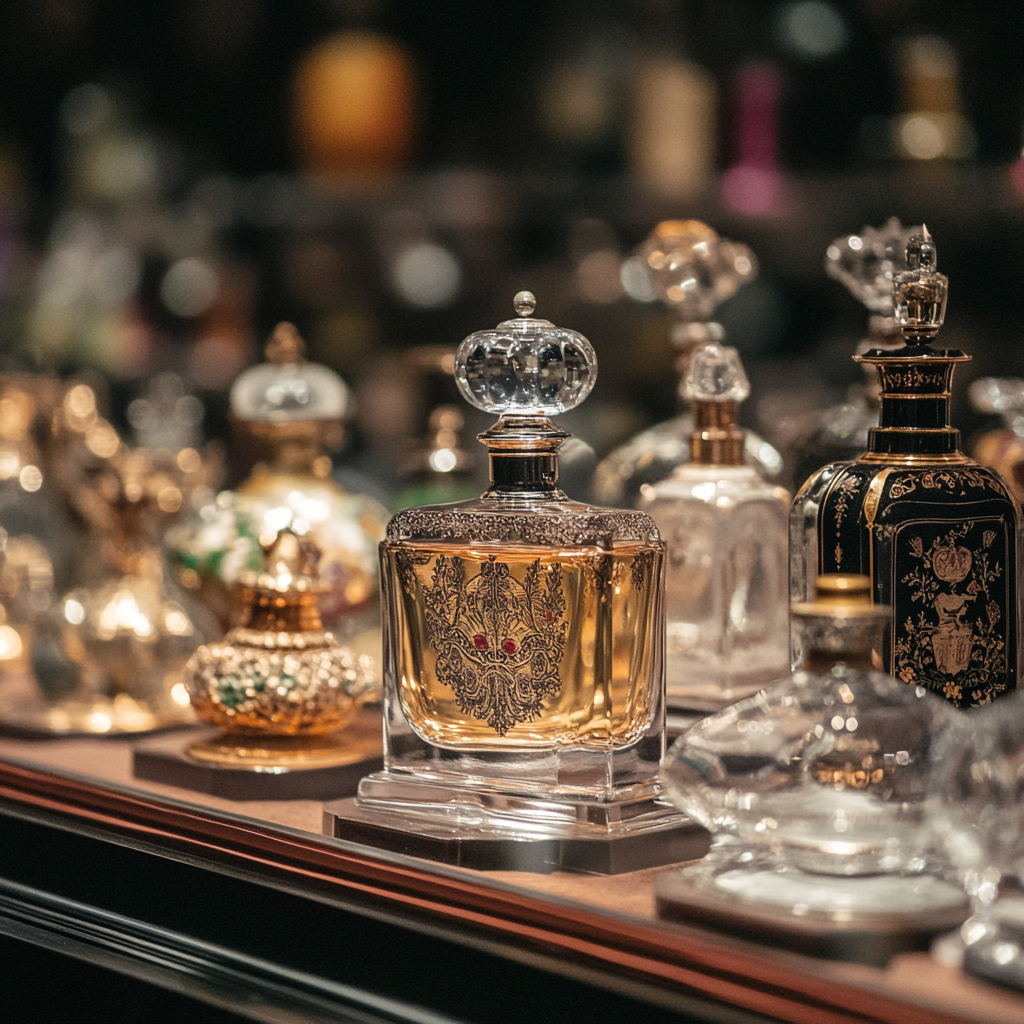The Evolution of Perfume: From Ancient Egypt to Modern Luxury
Throughout history, fragrance has been much more than a pleasant scent; it has served as a bridge between the divine, the personal, and the social. Across various cultures and epochs, perfume has been a powerful symbol of status, spirituality, and identity. From its early beginnings as a sacred offering to its modern role as a marker of individuality, the allure of perfume has transcended borders and eras.
Perfume’s timeless appeal lies in its ability to evoke emotion, trigger memories, and express individuality. For millennia, humans have harnessed the power of scents to celebrate life, honor the gods, and signify status. The stories of ancient civilizations, medieval alchemists, and modern perfumers are all intertwined in the fascinating evolution of this craft.
The Origins of Perfume: Ancient Egypt and Mesopotamia
Perfume’s history begins in the cradle of civilization—Ancient Egypt and Mesopotamia. These cultures were among the first to explore the transformative power of fragrance, using it in rituals, daily life, and even the afterlife. Incense, balms, and oils played critical roles in their spiritual practices, symbolizing a connection to the divine.
In Ancient Egypt, perfumers were considered artisans of the highest order. They meticulously crafted fragrances using natural ingredients such as myrrh, frankincense, and lotus flowers. Perfume was not merely a luxury; it was central to religious ceremonies and embalming processes, ensuring the deceased’s safe passage to the afterlife. Pharaohs and priests were often the only ones permitted access to these aromatic treasures.
Meanwhile, in Mesopotamia, the art of perfume-making also flourished. Records from this era reveal the use of distillation techniques, albeit rudimentary, to extract essential oils from flowers and herbs. Scented oils were applied to the body as an early form of self-care, but their significance extended beyond personal use, as they were considered valuable offerings to gods and kings alike.
Perfume in Ancient Greece and Rome: A Symbol of Wealth and Power
As perfume spread to Ancient Greece and Rome, it evolved into a potent symbol of luxury and influence. In these societies, scented oils and balms became synonymous with wealth, status, and refinement, often reserved for the upper echelons of society.
The Greeks approached perfume-making as a science and an art. They documented recipes, refined distillation techniques, and associated certain scents with mythological figures. For instance, rose was linked to Aphrodite, the goddess of love. This era also saw the rise of perfumed public baths, where citizens indulged in aromatic pleasures as part of their grooming rituals.
The Romans, on the other hand, elevated perfume to extravagant levels. It was used liberally at feasts, religious ceremonies, and even in warfare to intimidate opponents with clouds of fragrant smoke. Wealthy Romans would often have entire rooms dedicated to perfumes, showcasing their collections as a display of opulence and power.
The Middle Ages: Perfume’s Revival in the Islamic World
The decline of the Roman Empire marked a temporary setback for perfume in Europe, but the Islamic Golden Age revived and advanced the craft. Scholars and alchemists in the Middle East refined distillation techniques, particularly with the invention of the alembic still, which allowed for more precise extraction of essential oils.
Figures like Avicenna, a Persian polymath, were instrumental in the development of perfumery. He is credited with perfecting the distillation of rose water, a process that became a cornerstone of Middle Eastern perfumery. Perfume production during this era was closely tied to medicine, as fragrances were believed to have both therapeutic and spiritual benefits.
Through trade routes such as the Silk Road, these advancements spread to Europe, reintroducing perfumes to the Western world. Spices and exotic resins, brought from the East, became coveted commodities, setting the stage for the European Renaissance of perfumery.
The Renaissance and Beyond: Perfume as Art
By the Renaissance, perfume had firmly established itself as an art form in Europe. The courts of France, Italy, and England became epicenters of fragrance innovation, with royalty leading the charge. Catherine de’ Medici, for example, was known for her custom-made scents, blending artistic creativity with personal expression.
The Baroque period elevated perfumery to new heights, where it intertwined with fashion and societal etiquette. Perfume became essential in masking unpleasant odors of crowded urban centers, but it was also a statement of individuality. Louis XIV of France, dubbed the “Perfume King,” demanded that his court be constantly enveloped in aromatic splendor, further cementing perfume’s association with luxury and refinement.
This era also saw the establishment of Grasse, a region in France that remains synonymous with high-quality perfume production. The blending of natural and synthetic ingredients became an art form, laying the groundwork for modern perfumery as we know it.
Key Takeaways on the Evolution of Perfume
- Perfume originated in ancient cultures like Egypt and Mesopotamia, serving spiritual and ceremonial purposes.
- The Greeks and Romans transformed perfume into a luxury symbol, associating it with power and prestige.
- The Islamic Golden Age brought technological advancements that revived perfumery in Europe.
- The Renaissance elevated perfume as both a personal and artistic expression.
Finally, we recommend that you read our other article, in which we talked about a set of perfume samplers.
FAQ
Perfume was primarily used in religious ceremonies, embalming, and as a connection to the divine.
Avicenna, a Persian polymath, contributed significantly by refining distillation techniques.
Grasse became the hub of high-quality perfume production during the Renaissance and remains so today.




